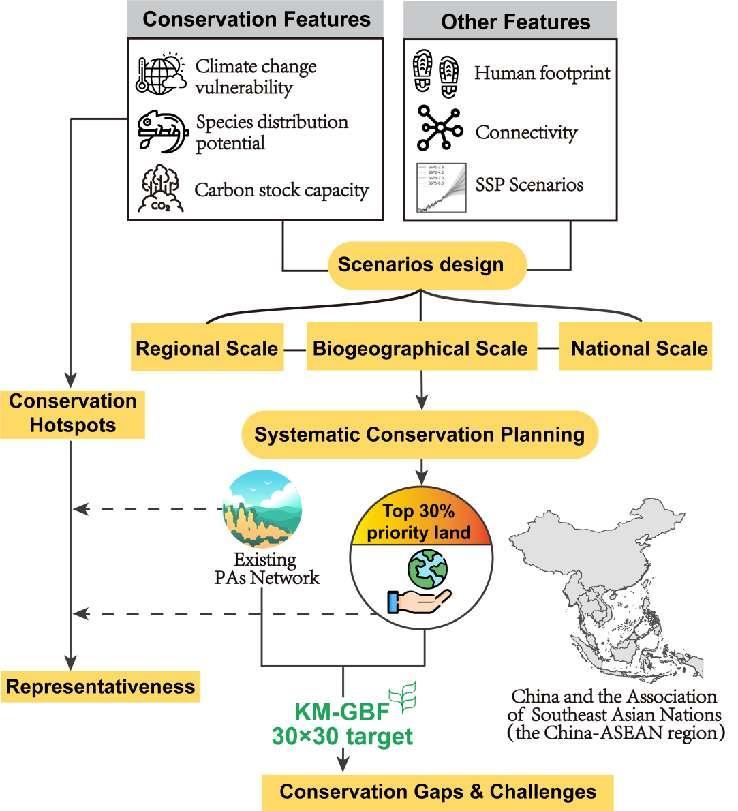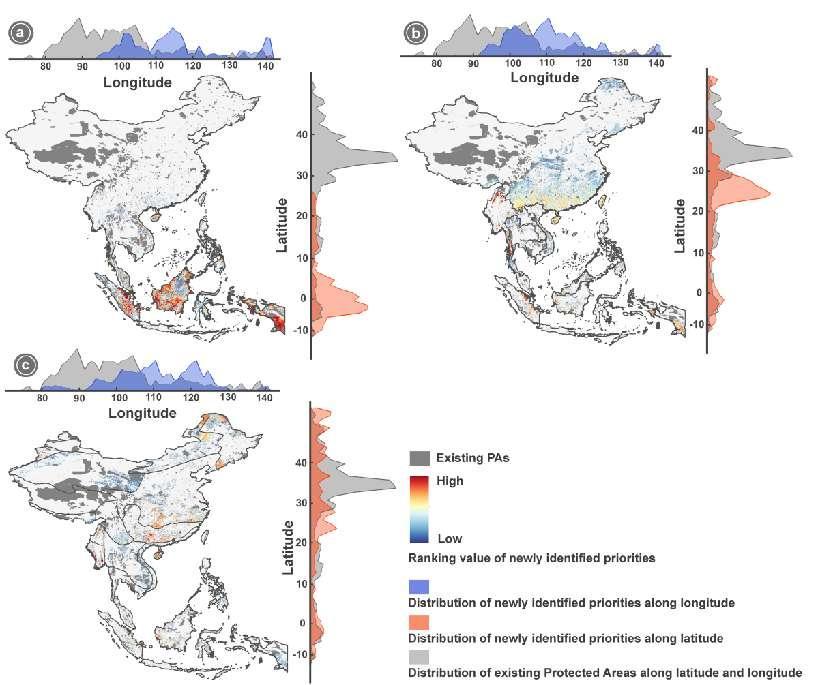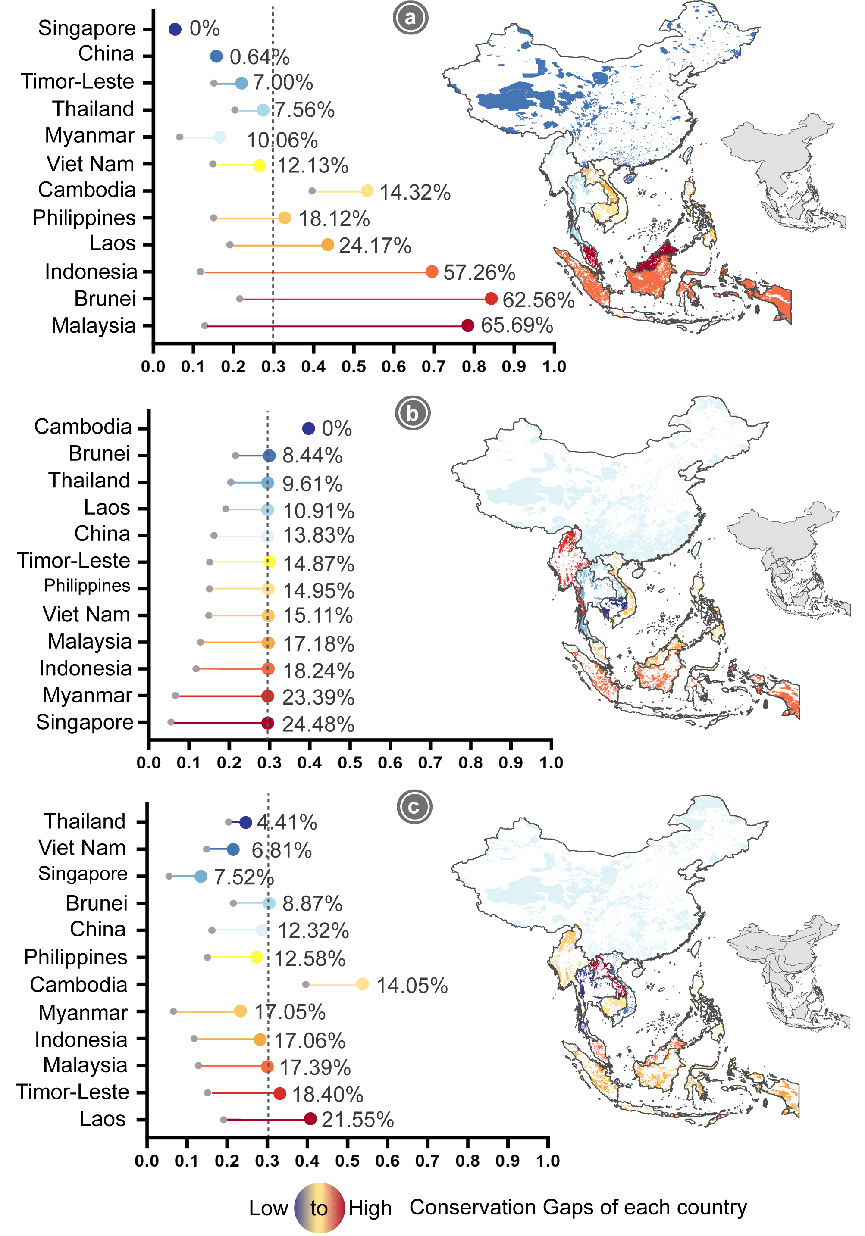The "Kunming-Montreal Global Biodiversity Framework" (KM-GBF), championed by China in its capacity as chair country, has been recognized by the international community as a historic achievement in reversing the accelerated global trend of biodiversity loss. Among its ambitious targets, Action Target 3’s “30×30” commitment - protecting 30% of Earth's land and oceans by 2030 - presents an unprecedented strategic opportunity for global biodiversity conservation. However, during framework implementation, countries in the "Global South" generally face multiple challenges including lack of spatial data, weak assessment tools, and uneven conservation capacities. Particularly under increasing climate uncertainty, there is an urgent need to construct an integrated system pathway that incorporates future scenario simulations, multi-source data integration, and multi-scale coordination for identifying conservation priority areas and filling protection gaps, thereby enhancing the scientific rigor and equity of global biodiversity governance.
The Research Group led by Associate Professor Yu Le from the Department of Earth System Science (DESS) at Tsinghua University, in collaboration with multiple institutions, selected the China-ASEAN region as the study area. They completed mapping of 2030 climate change vulnerability hotspots, terrestrial vertebrate species distribution potential hotspots, and carbon storage potential hotspots based on the "Exposure-Sensitivity-Adaptation" metrics. Through systematic conservation planning methods, they comprehensively considered human activities, conservation connectivity, and Shared Socioeconomic Pathway (SSP) scenarios to identify conservation priority areas and protection gaps in the China-ASEAN region at three scales: regional, national, and biogeographical.

Fig. 1 Framework of a comprehensive methodology for predicting and analyzing conservation features in China and the Association of Southeast Asian Nations (China-ASEAN) in future scenarios.
The study revealed that 6.59% of the land area in the China-ASEAN region exhibits overlapping hotspots across all three categories of hotspots, primarily distributed in Indonesia, Malaysia, and Cambodia. Newly identified conservation priority areas at all scales are concentrated in low-elevation zones, with regional-scale priorities clustered between 10°S-10°N latitude. Currently, protected areas (PAs) cover 15.49% of the region's land area, encompassing 7.00% of climate change vulnerability hotspots, 12.45% of species distribution potential hotspots, and 14.56% of carbon storage potential hotspots. Achieving the "30×30" commitment at the regional scale would increase these proportions to 22.93%, 33.15%, and 34.75% respectively.
Further analysis demonstrated that while the configuration of conservation priority areas is significantly influenced by planning scale, it maintains stability across different SSP scenarios, showing cross-scenario effectiveness. At the biogeographical scale, the China-ASEAN region exhibits the smallest average protection gap (13.14%). At the regional scale, Indonesia faces the greatest financial pressure, while Malaysia experiences the most prominent funding challenges at both national and biogeographical scales. The research emphasizes that precision conservation based on appropriate scales is essential to fulfill the "30×30" commitment and maximize its conservation efficacy under climate change.

Fig. 2 In China and the Association of Southeast Asian Nations (China-ASEAN), spatial priorities for (a) regional protection coordination, (b) national protection coordination, and (c) biogeographical protection coordination and their latitude and longitude (dark gray, existing PAs in the conservation priority areas; blue to red shading, rank of newly identified areas of conservation priority; coordinate axis gray, distribution of existing protected areas; coordinate axis red, distribution of newly identified priorities; coordinate axis blue, distribution of newly identified priorities).

Fig. 3 In China and the Association of Southeast Asian Nations (China-ASEAN) for the 30×30 target under the SSP245 (Shared Socioeconomic Pathway) scenario: (a) regional, (b) national, and (c) biogeographical gaps in conservation area (gray dots, current protection proportion for each country; blue to red shading, proportion a country needs to protect to achieve the 30×30 target at each scale; length of colored lines to gray dots, relative size of conservation gap; countries arranged from top to bottom according to increasing gap size; gray dashed line, 30% protection area target).
The findings were published in Conservation Biology under the title "Bridging conservation gaps under climate change at multiple scales to protect 30% of Earth's surface by 2030". Postdoctoral researcher Wu Hui from the DESS, Tsinghua University is the first author, with Associate Professor Yu Le as the corresponding author. Collaborators include Researcher Ma Keping and Researcher Shen Xiaoli from the Institute of Botany, Chinese Academy of Sciences; Researcher Gao Jixi and Researcher Wan Huawei from the Satellite Environment Application Center, Ministry of Ecology and Environment; Professor Liu Jianguo, Member of the National Academy of Sciences of the United States and from Michigan State University; Professor James E.M. Watson from the University of Queensland, Australia; Associate Professor Cao Yue from the School of Architecture, Tsinghua University; Dr. Hua Ting from the Norwegian University of Science and Technology; Dr. Zhao Jianqiao from China Agricultural University; and Liu Tao, a doctoral student from the DESS, Tsinghua University. The research was funded by the National Key R&D Program of China, the National Natural Science Foundation of China, and the China Postdoctoral Science Foundation, among others..
Full text link:
https://conbio.onlinelibrary.wiley.com/doi/10.1111/cobi.70054
Written by Wu Hui